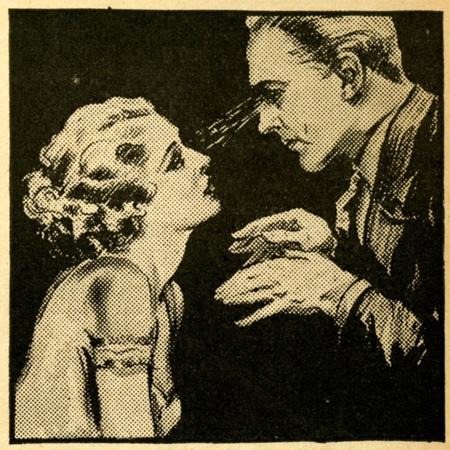Imag(in)ing intimacy.
On the visual and material representation of affection.
Disciplines:
- Media (Film) Theory
- Philosophy
- Phenomenology
- History of Science
- Perfomance Studies
- Art History
This research unpacks different traditions of visualising and imagining intimacy through tracing moments in Science and Arts in which touch as gesture or symbol shifts in meaning. The frame work of analysis spans from 19th century hypnosis, early cinema and theatrical performances, to contemporary debates in Artificial Emotion (AE). The work unpacks structural differences and challenges of visualising immaterial, mobile terms within scientific technologies and artistic media forms.
Research Interest
What we consider to be intimate today has to be seen in a long tradition of cultural or social, scientific and technological co-construction of emotion, subjectivity and the human body. This work is not on what intimacy is, but on how intimacy relates to its expressive symbols and structures. In being based on symbolic codes, the concept of intimacy relies on visual 'hints' mediated through media forms while strongly shaped by those.
In this work, I suggest to think intimacy as a fluid idea or concept beyond restricting it to a context of feeling or ‘interpersonal relationships’ but rather to think it as a ‘shell’ that is intellectually moving through time and field as it attaches itself to other mobile concepts such as subjectivity, physicality and the contemporary buzz word, the mind. I will look into important steps in the history of visualisation technology, such as hypnosis in film and emotion in robotics, to unpack how the understanding of body, mind or emotion feedbacks into the visual represention of intimacy or affection.
What I aim to find out is how the visualisation or materialisation of a discoursive concept points to the ambiguity of its own symbolic representation, or how expression signifies experience. Basically, I am tracing the immaterial in the material, the symbolic in the literal, the imaginary in the visual when thinking intimacy or emotion.
This debate is trying to connect broader concepts such as culture, science, media and visualisation technologies and their influence on our lives beyond disruptive borders such as social or technological, artistic or scientific, and digital or analogue. This work is situated in media and film theory, philosophy (phenomenology, philosophy of technology, post-humanism), history of psychology, affective programming and robotics, and in general looks into theories on visualisation technologies in Arts and Science.
Research references
(excerpt of Bibilography)
Blackmann, L. (2004) Immaterial Bodies. London: Sage
Brandstetter, G., Neumann, G. (2004) Romantische Wissenspoetik: Die Künste und die Wissenschaften um 1800. 1st ed. Würzburg: Publisher Königshausen u. Neumann.
Crary, J. (1994) Unbinding Vision. October. [Online] Volume 68. pp. 21-44. Available at doi:10.2307/778695 [Accessed 01 September 2014].
Dashiell, J. F. (1937) The Need and Opportunity for Experimental Psychology. Social Forces [Online]. Vol. 15, pp. 490-492. Available at https://bit.ly/1P05ByC [Accessed 10 August 2014].
Darley, A. (2000) Visual Digital Culture. Surface play and spectacle in new media genres. London: Routledge
Daston, L.,Galison, P. (2007) Objectivity. New York: Zone Books
Didi-Huberman, G. (1997) Erfindung der Hysterie. Die photographische Klinik von Jean-Martin Charcot. Munich: Publisher Fink.
Diebner, H. (2006) Performative Science and Beyond: Involving the Process in Research. Vienna: Springer.
Fara, P. (1996) Sympathetic Attractions: Magnetic Practices, Beliefs, and Symbolism in Eighteenth-Century England. Princton: Princton University Press
Flusser, V. (1999) The Shape of Things. A philosophy of Design. London: Reaktion Books.
Massumi, B. (2002) A Shock to Thought. Expression after Deleuze and Guatarri. London: Routledge
Perri, T. (2013) Image and ontology in Merleau-Ponty. Continental Philosophy Review. Volume 46. pp. 75–97. Dordrecht: Springer Science+Business Media.
Pickering, A. (1995) The Mangle of Practice: Time, Agency, and Science. 2nd ed. Chicago: University of Chicago Press.

